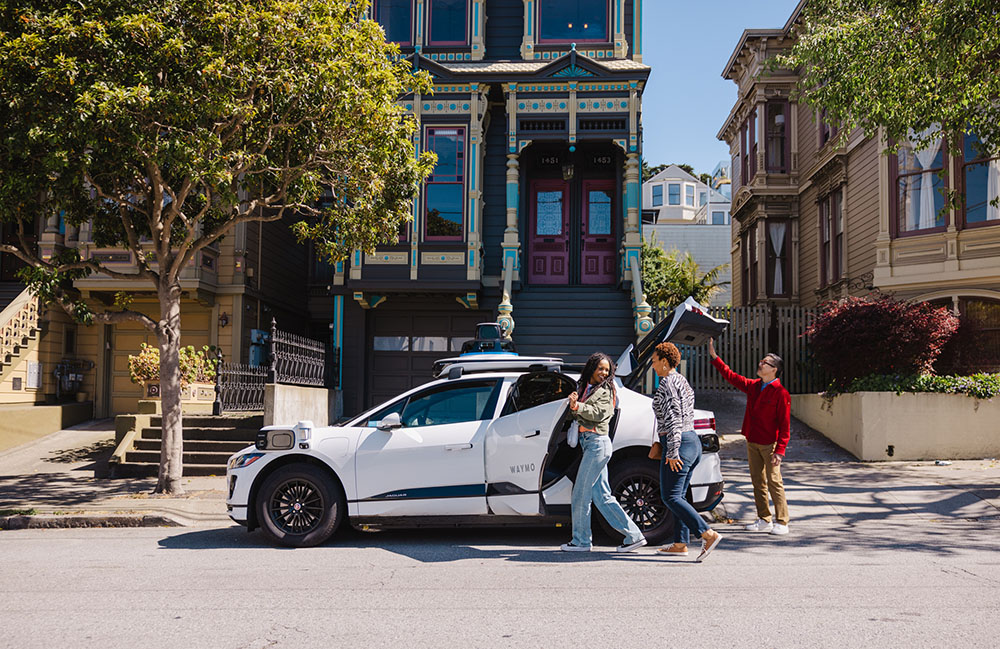
Waymo was first given the green light to begin public robotaxi rides in California in October 2021. | Source: Waymo
Waymo LLC this week said it has surpassed 100 million fully autonomous miles without a human driver behind the wheel. The Alphabet Inc. subsidiary said it has doubled its mileage in just six months while expanding to new cities like Atlanta.
The company is now driving more than 2 million fully autonomous miles and providing over a quarter million rides per week, it said. It has served more than 10 million fully autonomous trips to date. Waymo currently operates services in Phoenix, San Francisco, Los Angeles, and Austin.
“Reaching 100 million fully autonomous miles represents years of methodical progress now accelerating into rapid, responsible scaling,” said Saswat Panigrahi, Waymo’s chief product officer. “It would take the average human driver more than 7,000 years to drive that much!”
“We’ve doubled our mileage in just six months while launching in new cities like Atlanta, and [are] finding further evidence that the Waymo Driver is improving road safety,” he asserted. “As we expand to serve more riders in more cities, we’ll encounter new challenges that will continue strengthening our service while bringing the benefits of Waymo to more people.”
Waymo, which was named the Robot of the Year in the 2025 RBR50 Robotics Innovation Awards, has emerged as a clear leader in the robotaxi space in the U.S. The company is planning to launch robotaxi services in Miami, Atlanta, Washington, D.C., and Tokyo in the coming years. Earlier this year, it announced plans to send a small fleet of vehicles to map Boston.
Waymo expands service area to keep up with competition in Austin
Waymo has increased its service area in Austin from 37 sq. mi. (95.8 sq. km) to 90 sq. mi. (233 sq. km). The service is available exclusively through the Uber app in the city, making it easy to hail, it said.
While Waymo has established itself as a leader in robotaxi operations in the U.S., it still has competition. In June, Tesla officially launched its robotaxi service in Austin.
That service is using a small fleet of Tesla Model Y vehicles equipped with the company‘s “Full Self-Driving” (FSD) software. It is offering rides only to a select group of investors and influencers.
So far, Tesla’s robotaxis are operating with a safety monitor in the passenger seat. Also this week, Tesla CEO Elon Musk announced that the company would be expanding its Austin service area.
Legislators aim to legalize robotaxis in D.C.
Washington, D.C., Councilmember Kenyan McDuffie recently introduced legislation to allow fully autonomous vehicles (AVs) to operate on city streets. Currently, D.C. law requires a human operator behind the wheel of the vehicle.
McDuffie’s bill would eliminate the driver-in requirement, paving the way for fully autonomous vehicles to serve D.C. riders in the near future.
In March, Waymo said it planned to bring its robotaxis to D.C. in 2026. The company said it will work closely with local policymakers to formalize the regulations it needs to operate without a human behind the wheel in the District.
Washington gets an average of 13.7 in. (34.7 cm) of snow a year, according to the National Weather Service. This marks the first time that Waymo is deploying its technology in a city that regularly gets snowfall.
While the company’s longtime rival Cruise is no longer in operation, it still faces competitors such as Zoox and Nuro, which are earlier in their deployment journeys. In 2024, Nuro expanded its capabilities using zero-occupant vehicles with the Nuro Driver system, while Zoox grew its operations in California and Nevada.
The post Waymo reaches 100M fully autonomous miles across all deployments appeared first on The Robot Report.


